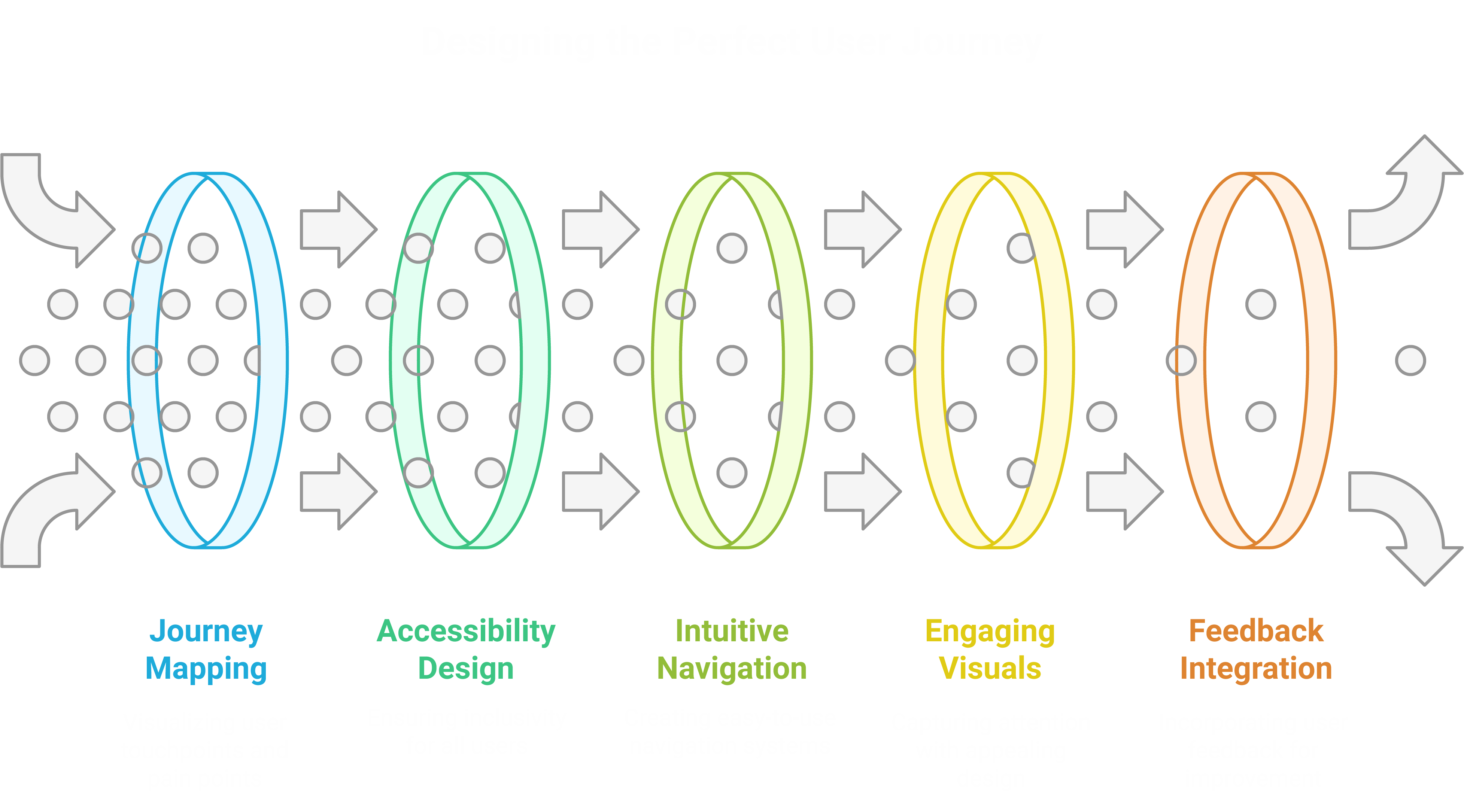Breaking Down Essentials of Designing for the Perfect User Journey



Every user who lands on your website brings something with them—an expectation, a goal, or a pain they’re hoping to solve. And as designers, our job is to guide them from confusion to clarity, from hesitation to action.
But perfect journeys don’t happen by accident. They are designed with care, empathy, and intention. Here’s a story that shows how.
Imagine you’re designing a website for a local coffee shop chain that’s about to launch mobile ordering. The stakeholders are excited. The photos look great. The features are all listed: order ahead, pay online, earn rewards.
But the UX team sees the bigger picture.
They ask, “What does the customer’s day look like before they even open the app?”
So they begin to map the user journey—from waking up late, scrambling to get dressed, to trying to grab coffee on the way to work without being late. They realize the true goal isn’t to browse the menu. It’s speed and certainty.
That insight reshapes the design.
The homepage gets a “Repeat My Last Order” button. The location finder uses geolocation. The rewards tracker doesn’t just show points—it tells you how many visits are left until your next free drink.
Suddenly, the user isn’t wandering. They’re flowing.

Designing the perfect user journey is part storytelling, part system design, and part psychology. It’s not about dazzling your user—it’s about serving them.
It means anticipating their needs, reducing their stress, and creating a sense of effortless movement from point A to point B.
Because when the journey feels natural, the experience feels magical.